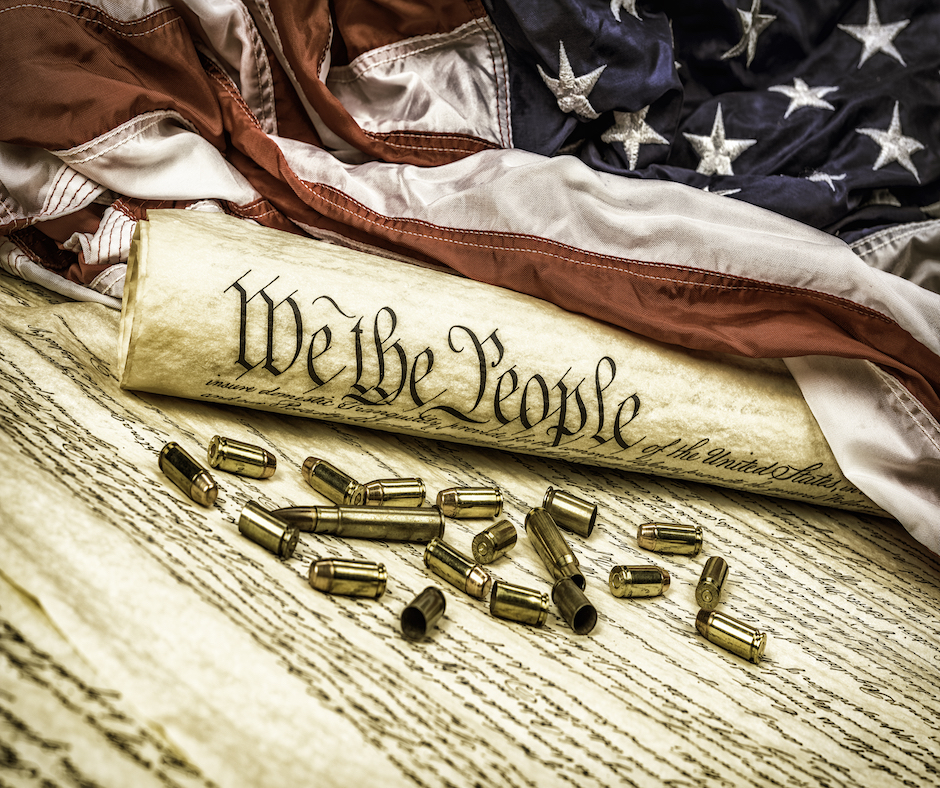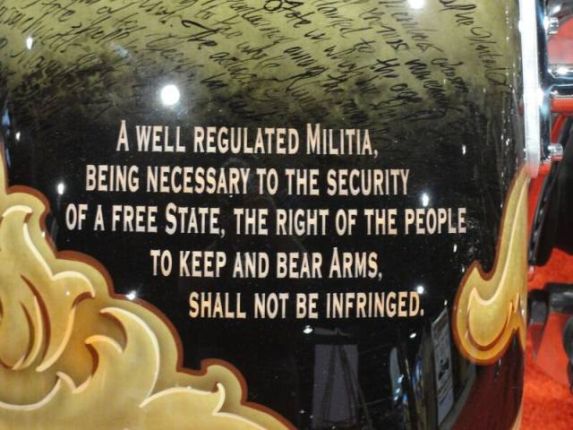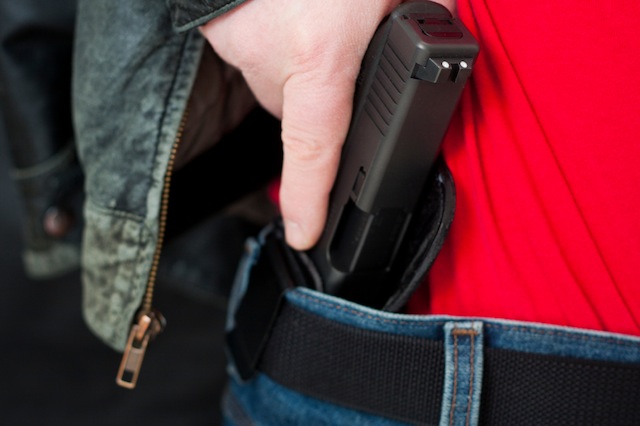Uncategorized
Everything You Need to Know About The Second Amendment
Published
1 year agoon
By
Gun Carrier
One of the most important and valued legislative items of the United States Constitution is the Second Amendment.
Since its inception, the Second Amendment faced interpretation regarding the right to bear arms among individual citizens. This led to ever-present debates in America regarding gun control legislation and what the words in the amendment truly signify for the country.
The Second Amendment is worded as such:
“A well-regulated Militia, being necessary to the security of a free State, the right of the people to keep and bear Arms, shall not be infringed.”
How the Second Amendment Came to Be
The Second Amendment is one of ten amendments, collectively called the Bill of Rights, added to the US Constitution through ratification by Congress in 1791.
The amendment rose out of the Revolutionary War in which the word militia referred to groups of men that banded together to protect their homes, and the colonies which eventually became states.
Due in part to the British occupation of the colonies/states, American citizens worried over the power of government to use soldiers for oppression of its people.
For this reason, they pushed for legislation that would allow the federal government to only raise armies with paid soldiers when fighting foreign adversaries. They felt any other means of personal defense should rest with individual citizens.
Why the Second Amendment Is Still Debated
Despite its existence across two centuries, the Second Amendment is still debated by government officials at every level, as well as individual citizens, for several reasons. Some of these reasons include:
- Phrasing and wording of the text
- Collective versus individual rights
- Application to modern firearms and modern society
Essentially, these reasons center around the perceived intentions of those who framed the Constitution and Bill of Rights as to the implications and impact of the Second Amendment.
Debate Over Wording
Much of the debate over the wording of the Second Amendment arises from the use of the word “Militia” and the phrase “keep and bear Arms.”
The word militia, at the time of the framing of the Second Amendment, came with the connotation that a national army might create a threat to the security of separate states.
This worry was one of the primary issues that led to the ratification of the Second Amendment. As the US functions today, this concern seems archaic and outdated.
The phrase “keep and bear Arms” is also characterized differently today than it would’ve been in the late 18th century.
Many scholars asserted, at the time of the Revolutionary War, “to bear arms” was an idiom meaning to belong to an organized military force.
Today, most Americans interpret the phrase “keep and bear Arms” to mean own and carry weapons – a substitution of synonyms for the words present in the text.
The debate over wording and interpretation of meaning when it comes to the Second Amendment is long-standing, as language and usage have changed across time.
What the framers might have intended with their words is not necessarily how modern Americans understand the phrasing.
Debate Over Rights
Another central debate is whether the Second Amendment is/was intended to protect an individual’s right to keep and bear arms or whether it protects a collective right through formal militia units made up of citizens.
Those who believe the intention is a collective right focus on the reference to “well-regulated Militia” in the amendment. They argue the right to bear arms should be reserved for sanctioned, organized groups such as the National Guard.
Those who believe the Second Amendment intends for all citizens to have the right to keep and bear arms call attention to the implication of personal protection as a right that “shall not be infringed.”
Therefore, they argue citizens have the right to purchase, own, and utilize firearms as protected by the Second Amendment.
In 2008, this debate was clarified to some degree by the Supreme Court in District of Columbia v. Heller.
In its decision, the Supreme Court ruled the Second Amendment protects an individual’s right to keep a gun for self-defense – the first time the Court guaranteed the right to own a gun to individuals.
However, the ruling also stipulated this right is subject to limits, especially with regard to weapon restrictions and prohibiting possession of guns by felons or those with mental illness.
Debate Over Modern Application
When it comes to the application of the Second Amendment to modern firearms and society, many proponents of stricter gun control legislation assert the framers of the amendment could not foresee the types of modern firearms available for purchase and their capacity for mass shootings.
These citizens argue, had the framers known of the assault weapons to come, they would have restricted the rights of individuals to access them.
Those who oppose these restrictions argue any ban or regulations of “arms” is in direct violation of the Second Amendment and the intention of its framers.
Additionally, proponents of gun control claim those who wrote the Second Amendment could not have predicted the level of gun violence in America that modern society faces.
Of course, most dissenters would argue the current level of gun violence has little to do with the Second Amendment itself, and much more to do with sociological factors which would not be mitigated by gun control.
How the Second Amendment Is Balanced Between State and Federal Governments
The Second Amendment has been upheld in protecting the rights of US citizens to keep and bear arms at a federal government level.
No individual or collection of states can remove or eliminate Second Amendment rights from any citizen.
However, individual states do have the power to limit Second Amendment rights. This takes place in the form of regulation, including licensing requirements, permit laws, and restricting guns such as assault weapons.
Though individuals have fought both against these regulations and for stricter policies regarding what is generally termed as gun control, state limits have been clarified and supported in many instances by the US Supreme Court.
This reflects a balance between the federal and state governments when it comes to the Second Amendment.
For example, state regulations can legitimately limit Second Amendment rights without banning them, unless the Supreme Court rules the regulations unconstitutional.
Why Gun Control Is Tied to the Second Amendment
As more firearms are developed and become more sophisticated as weaponry, and as gun violence escalates in the US, gun control will continue to be a contentious topic among politicians and citizens.
Furthermore, gun control will continue to be tied to the Second Amendment, how it is interpreted, and what it means to those with judicial power.
Those who support gun control argue the amendment refers to a collective right of US states to maintain militias.
They also assert wide personal access to firearms increases gun violence, and restriction, or controlling measures, of such access will reduce gun violence and save lives.
Those who oppose gun control assert the Second Amendment guarantees an individual citizen’s right to have firearms. They argue restrictions and controlling measures when it comes to guns is a violation of individual, constitutional liberty.
Overall, gun control will remain tied to the Second Amendment as opposing sides grapple with its meaning and application in the modern world.
You may like
-


Women’s Self-Defense Options Outside Your Home: Evaluating Concealed Carry Firearms
-
Home Defense | 2nd Amendment Rights
-


Why We All Need To Stop Using The Term Assault Weapon
-
[Video] Man Shoots His Own Leg, Narrowly Missing Artery, Lives To Tell Tale
-


He Wants To Do What To The Second Amendment?
-


To Pull The Trigger, Or Not: That Is The Question

Staccato P Review | Staccato P 1000 Round – The Most Accurate Duty Pistol

Sawed Off Shotgun | Everything You Need To Know

CZ 75 SP01 Tactical Gun Review | Gun Carrier

PODCAST: Gun Law Changes All Across America Right Now

PODCAST: How to Win Olympic Gold

PODCAST: 50 Important Ideas For Self-Defense, Self-Reliance, and Personal Safety

